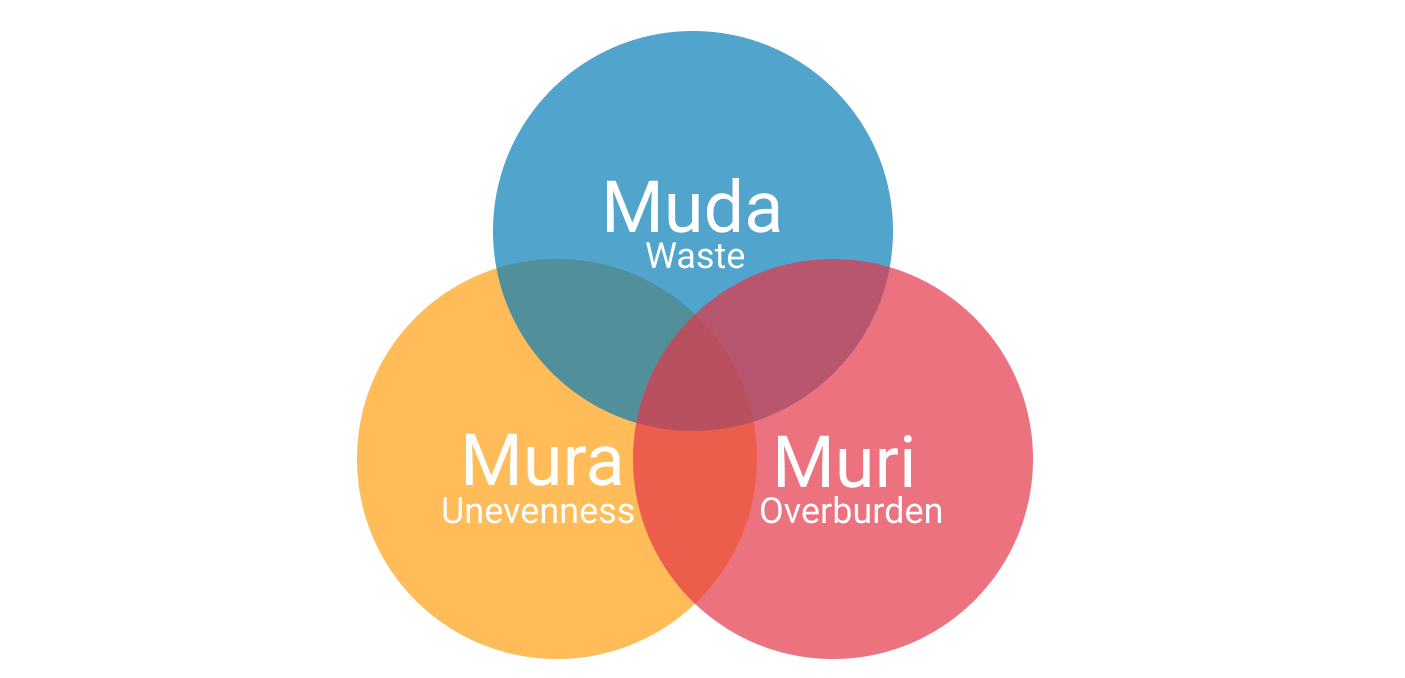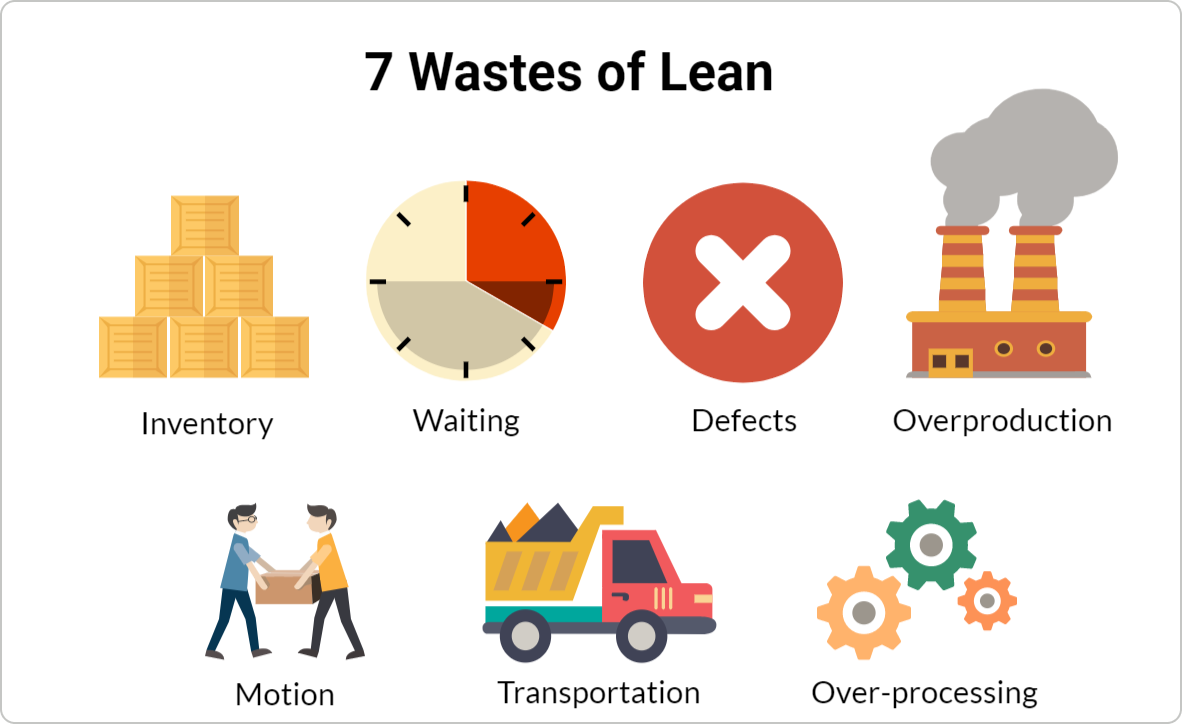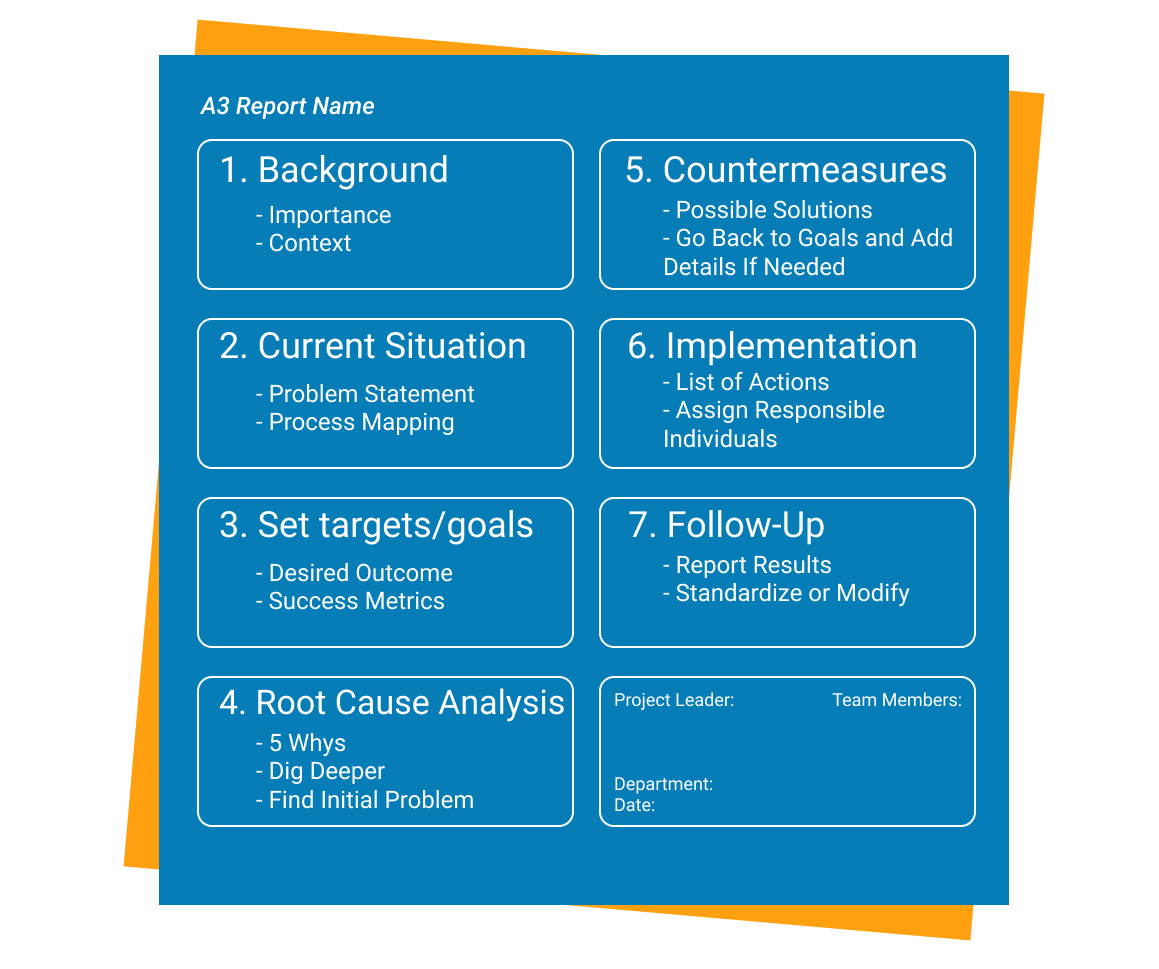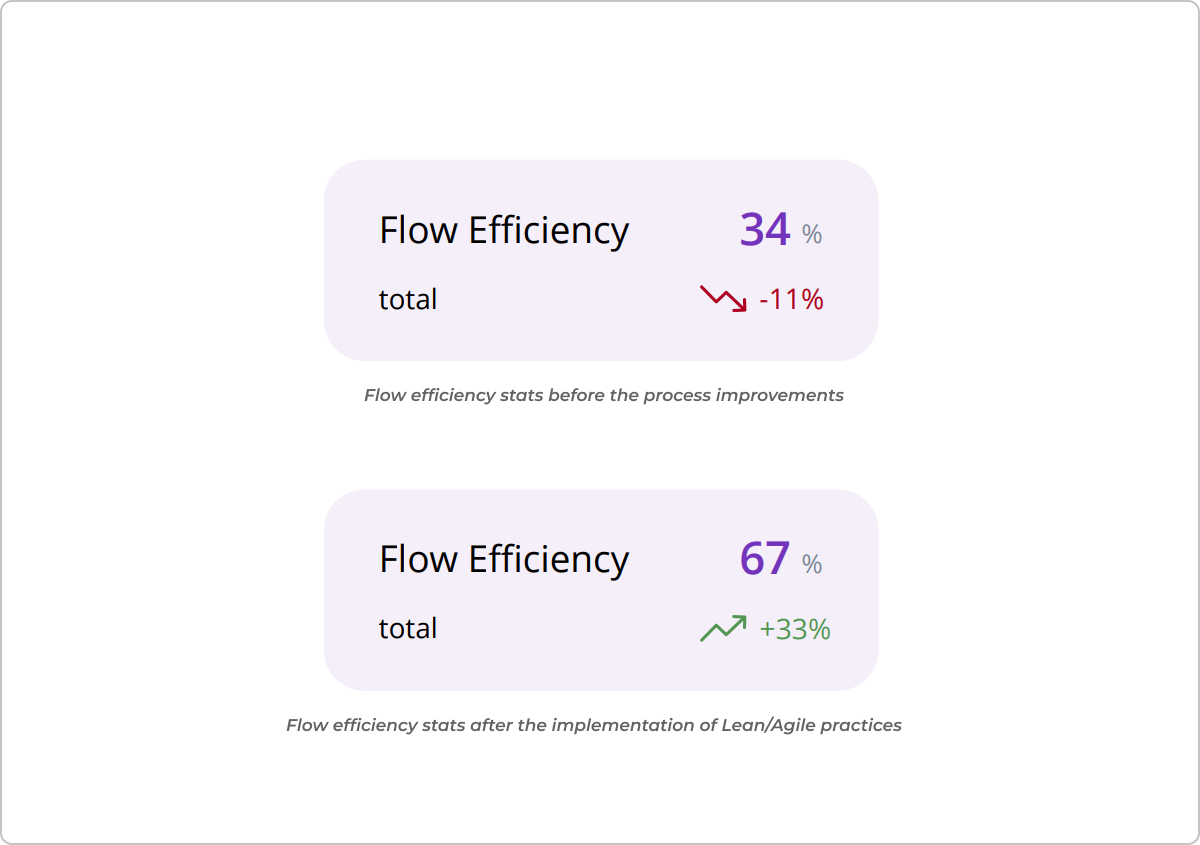Key Takeaways
-
What is Lean Waste? Any activity that consumes resources but doesn't create customer value.
-
7 Wastes of Lean: Transportation, Inventory, Motion, Waiting, Overproduction, Over-processing, and Defects.
-
Why It Matters: Reducing waste increases profitability, quality, and efficiency.
-
How to Identify Waste: Utilize tools such as Value Stream Mapping, Kanban Boards, 5 Whys, and Gemba Walks.
Lean management prioritizes the elimination of waste to boost value, efficiency, and profitability. Originating from the Toyota Production System, the concept of "waste" - or Muda - represents non-value-adding activities that drain time, money, and energy.
During his journey, Taiichi Ohno identified three major roadblocks that can negatively influence a company's work processes: Muda (wasteful activities), Muri (overburden), and Mura (unevenness).
Based on his observations and in-depth analysis, he categorized the seven types of waste (7 Mudas), which later became a popular practice for cost reduction and resource optimization.

What Are the Seven Wastes of Lean?
The Lean methodology identifies seven key types of waste that hinder performance:
-
Transportation: Unnecessary movement of materials, information, or products.
-
Inventory: Excess stock not aligned with customer demand.
-
Motion: Inefficient human or machine movement.
-
Waiting: Delays in workflow, approvals, or material arrival.
-
Overproduction: Producing more than needed or earlier than needed.
-
Over-processing: Doing more work or adding more features than required.
-
Defects: Errors that require rework or cause scrap.
Some Lean practitioners also add an 8th waste: Underutilized Talent - wasting people's skills by not involving them in problem-solving.

Why Is Identifying and Eliminating Waste Important in Lean?
Waste undermines profitability, slows delivery, and reduces quality. Identifying and eliminating it allows organizations to:
- Lower operational costs
- Improve product quality
- Speed up delivery
- Boost employee morale
- Increase customer satisfaction
How Does Each Type of Waste Affect Production or Services?
-
Transportation: Risk of product damage, delays, and extra handling costs
-
Inventory: Capital tied up in unsold stock, increased storage needs
-
Motion: Employee fatigue, safety risks, inefficiency
-
Waiting: Slower delivery cycles, wasted employee time
-
Overproduction: Excess output leads to all other wastes
-
Over-processing: High costs for unneeded work or features
-
Defects: Expensive rework, customer dissatisfaction
Lean Waste in Manufacturing vs. Service Sectors
While the 7 wastes apply across industries, they manifest differently:
Waste in Manufacturing
-
Transportation: Unnecessary movement of goods
-
Overproduction: Producing items without demand
Waste in Software/Service Industries
-
Transportation: Frequent task switching or handovers
-
Overproduction: Building unused features or running excessive reports
Lean Waste Examples
-
Software Development: Waiting for code reviews or QA testing
-
Marketing: Preparing campaigns that are never launched
-
Project Management: Over-documentation or redundant approval loops
What Tools Help Identify and Eliminate Lean Waste?
-
5 Whys: Ask "why" repeatedly to find root causes of waste.
-
Gemba Walks: Observe real work in real-time to identify inefficiencies.
-
A3 Reports: Structured problem-solving that reveals waste and enables cross-team alignment.
-
Kanban Boards: Track progress, WIP limits, and identify waiting or bottlenecks.
 Example of the A3 report template
Example of the A3 report template
How Global Machinery Supplier Identified and Eliminated Waste
Encoparts®, a global supplier of machinery spare parts, faced complexity, communication gaps, and missed deadlines in their international purchasing.
To address this, they took the following actions:
- Mapped their current workflow using value stream mapping.
- Implemented Kanban boards.
- Distinguished value-adding, necessary waste, and pure waste.
- Gained real-time visibility into queues, blockers, and lead times.

The results they achieved included:
- 33% improvement in flow efficiency
- Stabilized order cycle times
- Greater communication and process control

»» Want to see how they did it? Read the full Encoparts case study
How to Sustain Lean Waste Reduction and Continuous Improvement
- Engage team members: Empower them to own and solve inefficiencies.
- Monitor key metrics: Track cycle time, lead time, throughput.
- Use visual management: Keep everyone aware of work states and priorities.
How to Identify and Categorize Waste in Your Organization
»» Start by asking:
- What are our recurring delays?
- Where do we rework tasks?
- Which tasks repeat without adding customer value?
»» Next, classify:
- Necessary Waste: Can't be removed (e.g., compliance checks).
- Pure Waste: Should be eliminated (e.g., idle time, duplicate work).
Map your processes, observe them directly, and discuss findings with frontline staff.
Which Tools Help Track and Eliminate Lean Waste Effectively?
Digital platforms make Lean application easier. Look for tools that offer:
-
Process visualization (Kanban, Gantt)
-
Automation to eliminate repetitive tasks
-
Analytics to monitor WIP, cycle time, and bottlenecks
-
Collaboration features for team alignment
Platforms like Businessmap Lean Management Software offer robust features, including value stream mapping, Gemba boards, and progress tracking.
Eliminating waste is a foundational Lean principle that leads to streamlined operations, lower costs, and better products or services. By understanding the 7 types of waste and applying the right tools, you can build a culture of continuous improvement and lasting performance gains.
Businessmap is the most flexible software
to align work with company goals







 Example of the A3 report template
Example of the A3 report template



